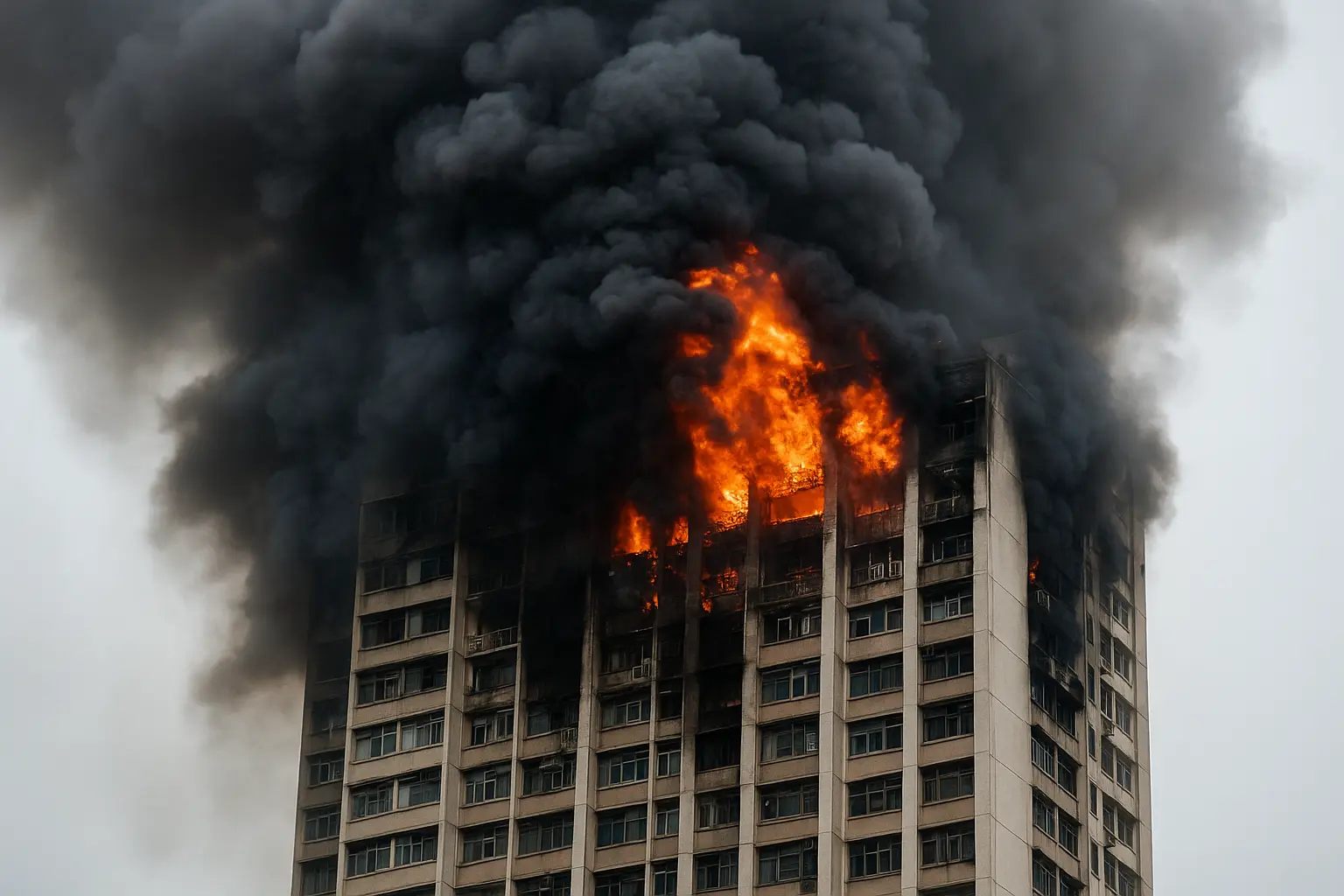A devastating fire in a high rise building in Hong Kong has resulted in a rapidly rising death toll, now confirmed at 83. Authorities are continuing search and rescue operations while simultaneously conducting a criminal investigation that has already led to multiple arrests. The scale of the tragedy has drawn national and international attention, prompting scrutiny of safety regulations, building management practices, and emergency preparedness in one of the world’s most densely populated cities.
The fire began in the early morning hours when most residents were still asleep. According to preliminary reports from the Hong Kong Fire Services Department, the blaze originated on one of the lower residential floors and spread upward with unusual speed. The building’s age and internal layout appear to have contributed significantly to the rapid escalation. Narrow corridors, aging electrical systems, and older ventilation structures may have allowed smoke and flames to move vertically through the tower before emergency teams reached the upper floors.
Residents reported being trapped in their apartments as thick smoke filled hallways and staircases. Many attempted to escape to balconies or rooftops, but heavy smoke created visibility issues. Firefighters used aerial ladders, cutting equipment, and thermal imaging tools to locate survivors. Several teams entered the building repeatedly despite extreme heat conditions. Their efforts prevented the toll from rising even higher, although dozens of victims were found in stairwells and units where smoke accumulation had intensified.
Hospitals across Hong Kong received waves of injured residents suffering from burns, smoke inhalation, and trauma sustained during escape attempts. Doctors noted that several victims arrived in critical condition due to prolonged exposure to toxic fumes. Medical teams implemented emergency protocols to stabilize patients and transfer particularly severe cases to specialized burn units.
Authorities have confirmed that arrests were made after early evidence indicated violations related to building safety compliance. Investigators are examining whether blocked fire exits, outdated alarms, or unauthorized interior modifications contributed to the scale of the disaster. Hong Kong Police stated that the individuals taken into custody are connected to building management and maintenance operations. Officials have not released all details, noting that the investigation is active and wide ranging.
Government representatives visited the site and announced that a full inquiry will be conducted. The administration emphasized that public safety is the priority and promised strict action against any parties found responsible. Urban planners and safety engineers have been called upon to evaluate the structural integrity of the building and determine whether additional risks remain.
Rescue operations are ongoing as teams search for survivors who may still be inside interior sections that remain unstable. Firefighters continue to cool hotspots and monitor weakened areas to prevent further collapse. Specialist units are scanning floors for pockets of survivors who may have found temporary shelter during the peak intensity of the fire. Authorities warned that the number of casualties may change as the search progresses.
Community response has been significant. Local organizations and volunteers are providing food, clothing, and temporary shelter to displaced residents. Social workers are coordinating support for families who lost loved ones. Emotional distress is widespread, as many residents saw flames from nearby buildings or watched rescue attempts unfold from the street.
Experts note that this event represents one of the deadliest fire incidents in Hong Kong in recent decades. Analysts argue that the disaster underscores the vulnerabilities present in older residential towers across the region. Hong Kong’s limited land availability has resulted in dense vertical construction. Many high rise buildings were constructed during earlier decades when safety codes differed from modern standards. Although periodic updates to regulatory requirements exist, enforcement and compliance remain inconsistent.
Fire safety specialists stress the importance of mandatory inspections, upgraded alarm systems, and evacuation drills. They argue that regular checks on electrical wiring, fire exits, and ventilation ducts are essential in preventing such catastrophic outcomes. This incident is likely to accelerate policy debates regarding mandatory renovation programs for aging high rise buildings.
International observers and diaspora communities have expressed concern as well. Many have family members living in similar residential towers. Calls for transparent reporting and long term reforms have grown across social platforms.
As rescue teams continue their work and families await confirmation on missing persons, the city faces a difficult period of mourning and reflection. The tragedy has revealed systemic challenges that require coordinated action from government agencies, building management bodies, and residents. A comprehensive review of regulatory frameworks is expected in the coming weeks once emergency operations stabilize.
The deadly high rise fire in Hong Kong stands as a stark reminder of the urgent need for stringent building safety practices in dense urban environments. The incident has already prompted significant action, but the long term response will determine whether similar disasters can be prevented in the future.







